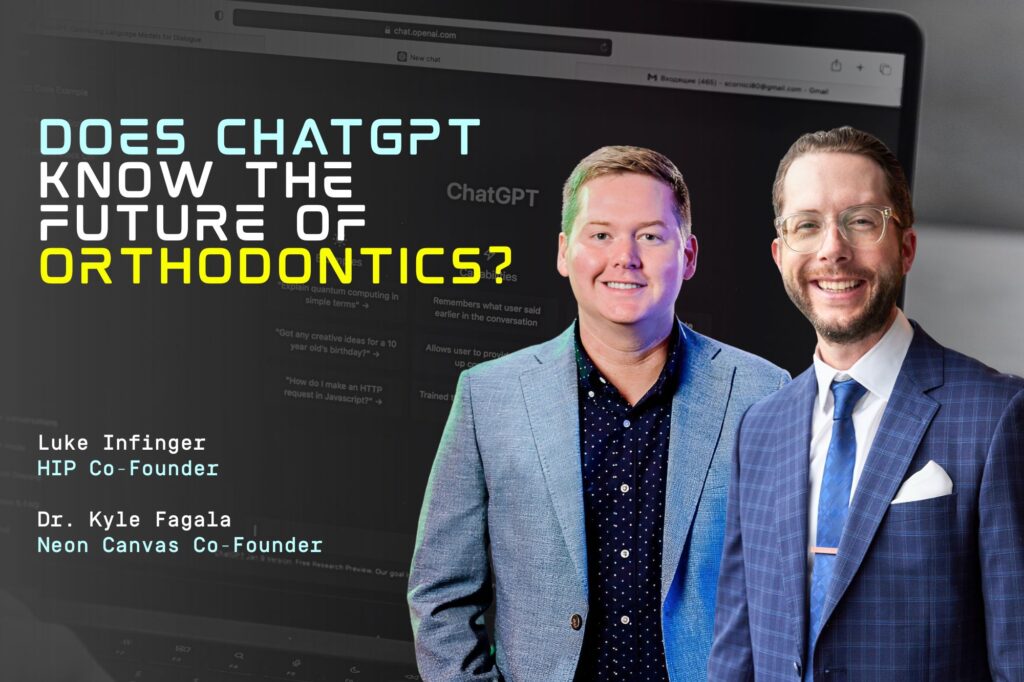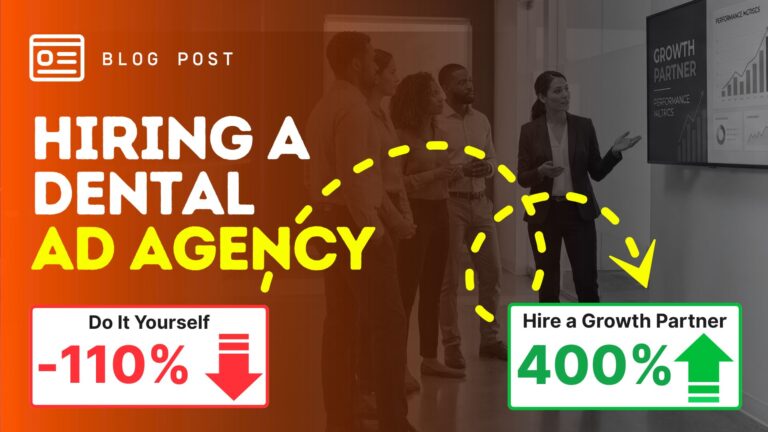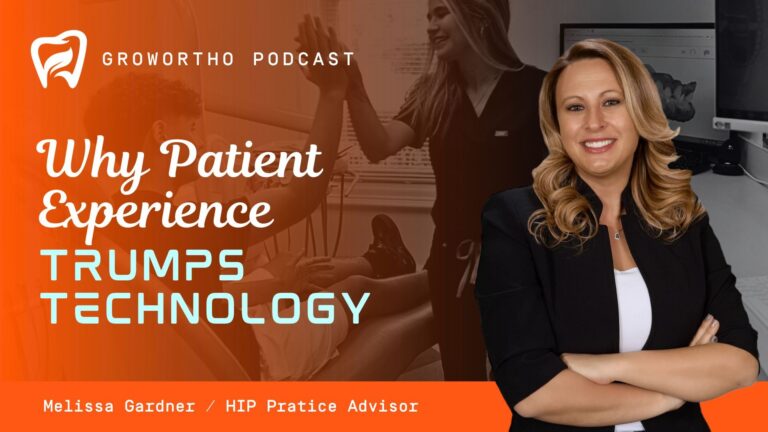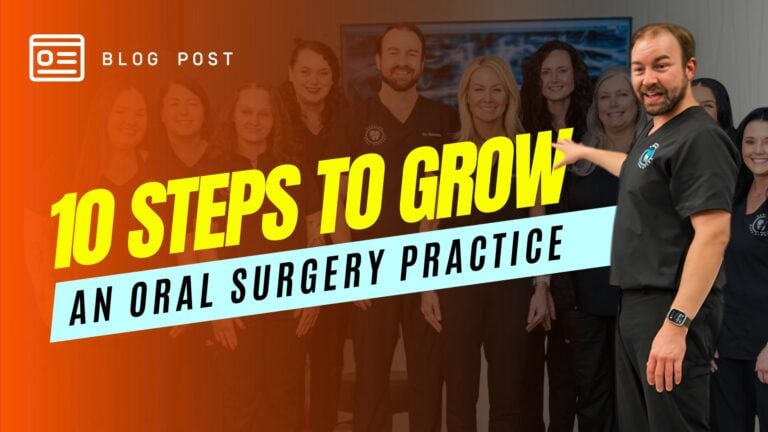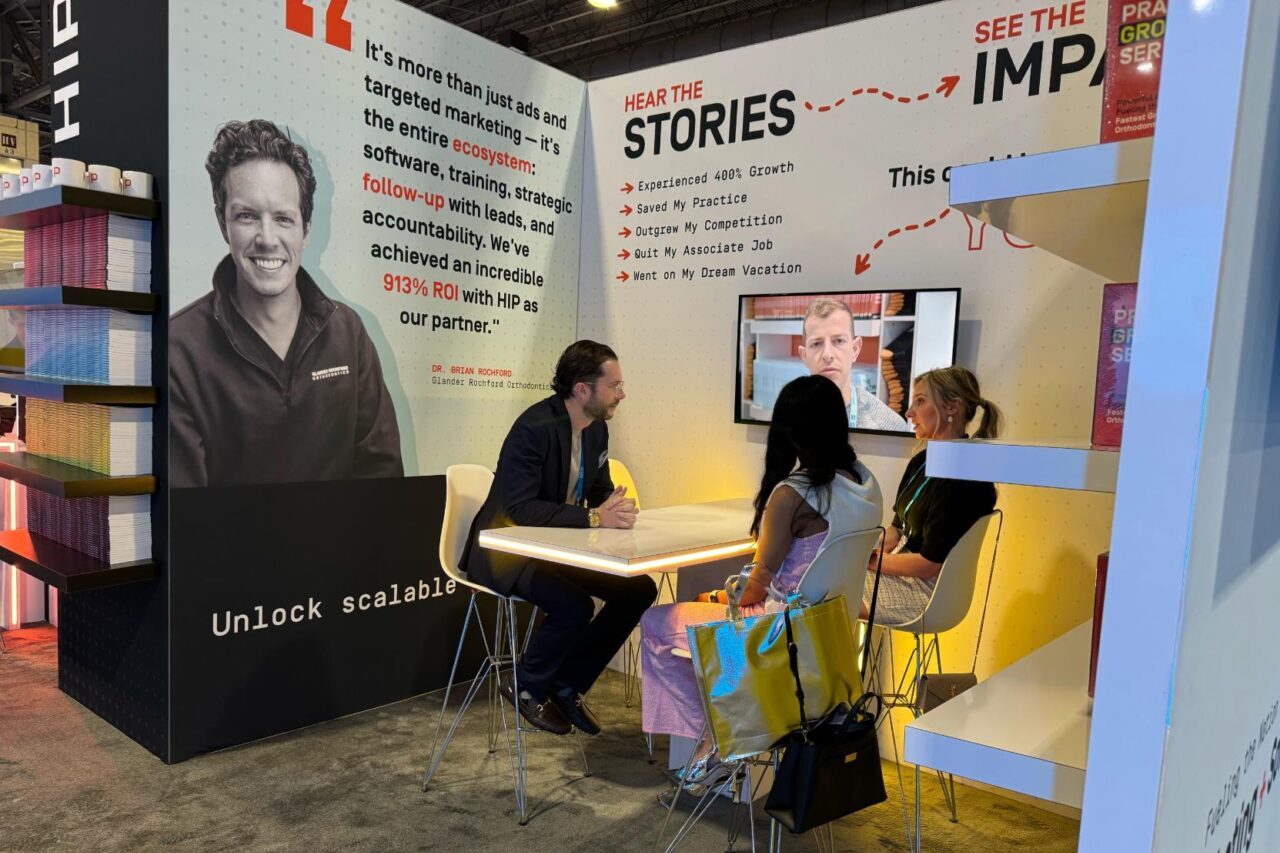Subscribe: RSS
Luke Infinger and Dr. Kyle recently fired rapid-fire questions at ChatGPT, asking how orthodontics might look in five, ten, and fifteen years. The ChatGPT offered bold predictions from autonomous DSOs to gene-editing gels. Luke and Dr. Kyle did not accept everything at face value, but they agreed on one point: practices that prepare will profit, while late adopters scramble. Below are five “what if” scenarios they debated, the context behind each, and clear steps you can take before next Monday’s morning huddle. Use this as a springboard, not a prophecy. The future will reward owners who stay curious, move fast, and keep patients at the center of every decision.
What If Corporate Groups Swallow Half The Market?
Luke likes private practice for one simple reason: speed. “You can be a lot faster with decision making and how you move,” he notes, pointing out that a DSO rarely green-lights a six-figure director of operations in a single meeting. Dr. Kyle questions whether full consolidation is even realistic. Opening a brick-and-mortar office still costs far less than a surgical suite, so independents can launch or re-launch quickly. Both agree community connection is the private owner’s advantage; when neighbors learn a clinic was sold to corporate, reputation often slides .
Stay ready:
- Map every decision slowed by external approval last quarter. Delegate at least one to your local leadership team this month.
- Join or create a cooperative buying group to shrink supply costs without surrendering brand control.
- Schedule two community touchpoints per quarter—think school talks or sports sponsorships—to reinforce your local roots.
What If AI Designs Every Treatment Plan?
ChatGPT forecasted “AI replacing first-year residents.” Dr. Kyle pushed back, citing compliance challenges and liability concerns. Luke sees potential when AI flags issues before appointments but warns that “platform pile-up” can chain the team to screens instead of patients. The duo settled on a three-point filter: adopt technology only if it improves outcomes, patient experience, and profitability.
Reality check:
- Remote monitoring apps look efficient until staff juggle multiple log-ins and patients ignore scan reminders.
- AI simulations can impress at consults yet still need a doctor’s judgment on biomechanics.
- Regulatory boards move slowly, so full automation will likely arrive in phases, not a single leap.
Quick move: List every digital subscription, score each 1–5 on outcomes, experience, and profit, and sunset any tool scoring below eight total.
What If Aligners, Brackets, And Wires Roll Off Your Printer?
Dr. Kyle believes direct-printed aligners will hit mainstream “maybe even sooner” than ten years. He and Luke also discuss printing trays, retainers, and even office doorstops, proving adoption can start small. Smart polymers that adjust force already exist in Nitinol wires, hinting at self-adjusting appliances ahead.
Get ahead now:
- Print study models and retainers to train staff on resin workflows.
- Assign an “innovation captain” who tracks costs, vendors, and FDA updates.
- Run payback math: many offices offset a starter printer once monthly aligner volume tops thirty-five cases.
What If Appliances Stream Live Data Or Disappear?
The transcript imagines CBCT, intraoral scans, and wearables merging into cloud-based “digital twins” that flag relapse risks before symptoms appear. Luke takes it further, picturing brackets acting like wearables. Dr. Kyle accepts the concept but highlights privacy and regulatory hurdles. They also toy with a wilder idea: gene-editing gels moving teeth without hardware, though ethical concerns loom large.
Prepare, don’t panic:
- Update consent forms now to include data-enabled devices.
- Follow AAO and ADA policy groups on genomic and nanotech developments.
- Draft patient FAQs so your team can answer “smart bracket” questions before sales reps show up.
What If Omnipresent Marketing Outperforms One Viral Reel?
AI predicted every doctor becoming a TikTok influencer. Dr. Kyle called that “dead wrong,” arguing that national fame rarely drives local starts. Luke prefers omnipresence: podcasts, direct mail, paid ads, and community events working together. The goal is steady visibility wherever parents look.
Campaign blueprint:
- Film a three-minute TV interview on airway health.
- Slice it into thirty-second Reels and YouTube Shorts.
- Mail a limited-time voucher to high-income ZIP codes using the same headline.
- Boost the clip on Facebook with “As seen on Channel 3” overlays for credibility.
Final Thoughts
None of these scenarios is guaranteed. Consolidation could stall, AI might plateau, and printers may advance slower than headlines suggest. What is certain is that preparedness beats prediction. Fast decision loops, intentional tech adoption, in-office manufacturing plans, and a story patients remember will keep your clinic in control of its destiny. HIP Creative partners with orthodontists who refuse to wait for change to roll over them. If you want a roadmap that turns uncertainty into growth, let’s start the conversation today.
